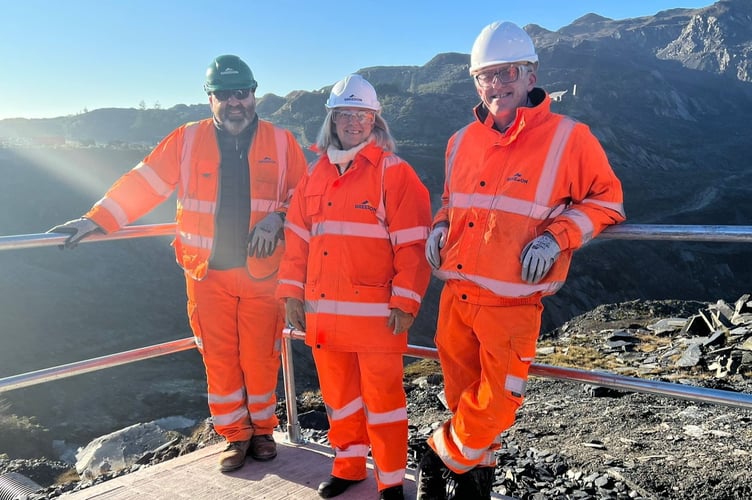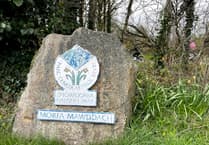In July 2021 the slate landscape of Gwynedd became Wales’ fourth UNESCO World Heritage Site.
Known for roofing the 19th century world, the landscape dominating communities from Dyffryn Ogwen to Abergynolwyn and Tywyn now enjoy the same status as landmarks such as the Taj Mahal.
The formal bid was submitted in 2019 with support from both Welsh and UK Governments. A public consultation also garnered widespread support.
World Heritage Sites are chosen for outstanding universal value to culture, history or science, and such status often provides an economic boom for the areas. Other well-known World Heritage Sites include Egypt’s Pyramids and the Grand Canyon.
Lord Dafydd Wigley chaired the Wales Slate Partnership Steering Group. Following the announcement, he said he was “thrilled”.
“Partners have worked tirelessly over more than a decade to reach this important milestone, and we will now need to strengthen our cooperation to ensure that we deliver for the people, communities and businesses of the slate areas.
“This inscription is a celebration of Gwynedd roofing the world, our unique language, culture and communities and how we exported people, technology and slate to the four corners of the world.”
During the 18th and 19th Centuries, once quiet agricultural communities experienced the full might of the industrial revolution as the quarries and mines became major providers of roofing materials and slate products throughout the world, with the Welsh language also remaining dominant.
But the industry, which employed 17,000 men during its heyday at the turn of the 20th century, fell into decline following bitter industrial disputes and the advent of war.
Its legacy lives on, however, with the huge tips a reminder that for every ton of slate produced, another 30 were simply dumped.
And two quarries reopened earlier this year.

The official reopening of the Ffestiniog and Cwt-y-Bugail quarries took place on Monday, 13 February, and MP Liz Saville Roberts was in attendance.
Welsh Slate’s reopening of the quarries created 19 new jobs for the area. The company is also expanding operations at Penrhyn quarry near Bethesda, which will bring another 10 jobs. Welsh Slate said the 29 jobs are just the start of their expansion plans and they are “looking for even more” new roles in the future.
Plans to extract 250,000 tonnes of Penrhyn purple slate were approved last November. The decision extends the life of the quarry to the end of 2035.
Mrs Saville Roberts said the re-openings were “good news for Blaennau Ffestiniog and the wider Meirionnydd economy”.
“Cwt-y-Bugail has been producing slate since 1840 and it is exciting to see the site being developed once again for the extraction and processing of Welsh slate.
“The increasing demand for Welsh slate is contributing to the creation and safeguarding of local jobs - underscoring the continued value of slate to our local and national economies.”
The successful Heritage Site bid included six specific areas, namely:
• Penrhyn Slate Quarry and Bethesda, and the Ogwen Valley to Port Penrhyn
• Dinorwig Slate Quarry Mountain Landscape
• Nantlle Valley Slate Quarry Landscape
• Gorseddau and Prince of Wales Slate Quarries, Railways and Mill
• Ffestiniog: its Slate Mines and Quarries, ‘city of slates’ and Railway to Porthmadog
• Bryneglwys Slate Quarry, Abergynolwyn Village and the Talyllyn Railway.
Wales’ existing world heritage sites are the castles and town walls of Edward I at Caernarfon, Conwy, Beaumaris and Harlech, the Blaenavon Industrial Landscape and the Pontcysyllte Aqueduct.
Gwynedd Council leader, Cllr Dyfrig Siencyn, said: “The legacy of the quarries remains extremely evident around us from the striking landscape, the industrial buildings and steam railways to our villages and towns.
“Not only is the influence of the quarrying industry visible, but its heritage is still heard strongly in the language, traditions and rich histories of these areas.
“Our aim is to celebrate this heritage and landscape and recognise their historic and industrial importance to humankind – in order to create opportunities for the future”.
According to Llechi Cymru’s website, some of the world’s best slate veins are located in Northwest Wales.
“It can be thinly split, and turned into light, durable roof slates,” it states.
“These were ideal for the new industrialised world that was in the process of spreading throughout Britain, Europe, Africa, Australia and North and South America. Without light roof slates, it would not be possible to build terraced houses, for example. Around a third of all the world’s slates would have been produced here in Gwynedd, by the end of the 19th century.
“The quarrymen borrowed machinery and techniques from other areas and adapted them for their own use. This means that the equipment and machinery used to work the quarries is innovative and enterprising. This includes the narrow-gauge railways, which weaved through the mountainous landscape to serve new ports and main line railways.
“Gwynedd quarrymen used their skills and technology to develop slate quarries in other parts of the world, particularly Europe and North America. The engineering expertise brought about by the development of the narrow rail network of Gwynedd quarries also provided a basis for the development of similar railways in mountainous areas of Asia, America, Africa, and Australia.
“The former agricultural landscape was confidently transformed to meet the demand for slate. This new landscape was formed by open and underground quarries, and also by the process of working and moving slate.”
The website adds the relationship between landscape, and work in that landscape, is so evident in many ways.

“For example, quarry galleries, and their associated rubble tips on nearby slopes, slate processing mills, and a stream to drive the water wheel, development of independent villages such as Tanygrisiau or Clwt y Bont, alongside a railway that would transport slate to the port, and wealthy landowners who developed grand houses and landed estates.
The care, attention and dedication to preserving north Wales’ slate heritage was recognised recently when a railway won an award for its efforts to the cause.
The Ffestiniog and Welsh Highland Railways (FfWHR) picked up the Peter Manisty Award for Excellence in recognition of almost 40 years of work to rescue, restore and operate the railway’s unique gravity slate train.
The Peter Manisty Award is not granted every year, and is only awarded for exceptional achievements in the heritage railway world. The team’s submission not only included preservation work on the train, but also their success in constructing a building to house 200 rescued waggons, the creation of a workshop in the original forge building at Boston Lodge and all the work needed to operate the train safely in the 21st Century.
Paul Lewin, FfWHR director and general manager said: “We are working hard to tell our story of the Ffestiniog Railway’s part in the slate industry world heritage site. The gravity train really brings that alive and shortly visitors will be able to hear the full story, learn new skills and get involved, but for now we will be taking a little time to celebrate this award and the achievements of over three decades work.”
Ffestiniog Railway was built to transport slates to the sea from the quarries in Blaenau Ffestiniog. Built on a continuous gentle gradient over some 13 miles, loaded slate waggons run down to the port by gravity.
The empty waggons were then hauled back up the hill by teams of ponies. This highly successful arrangement was in place until 1863 when steam engines replaced the ponies.
Earlier this month, Gwynedd company Inigo Jones announced it had supplied the slate plaques to go on display at local World Heritage Status sites.
The company said it was “delighted to have supplied 20 engraved Welsh slate plaques for the World Heritage slate sites in Gwynedd”.

Slate from Gwynedd is still making its way around the world today.
On Friday, 10 March, Damián Biss, mayor of Rawson, in Chabut, Patagonia, received the Welsh artist/stonemason Tom Griffiths.
Tom presented a project to carry out a construction in the provincial capital. The project, Crawia Patagonia, involves the installation of a traditional Welsh Slate fence with flagstones, extracted in quarries where those first immigrants who arrived in Chubut in 1865 worked and lived. The project will transport these stones from Blaenau Ffestiniog, recently twinned with Rawson, as a symbolic gesture in honour of the Welsh who came to Chubut in 1865, and to create a monument/public space.
Tom said: “For centuries, the Welsh people have toiled in these quarries. Men, women, children from the age of 8, entire families, working in this dangerous and heavy industry.
“Perhaps these gruelling work conditions played a part in the decision why some families decided to emigrate to Patagonia with the founding members of the form what is now known as the Wladfa.”





Comments
This article has no comments yet. Be the first to leave a comment.